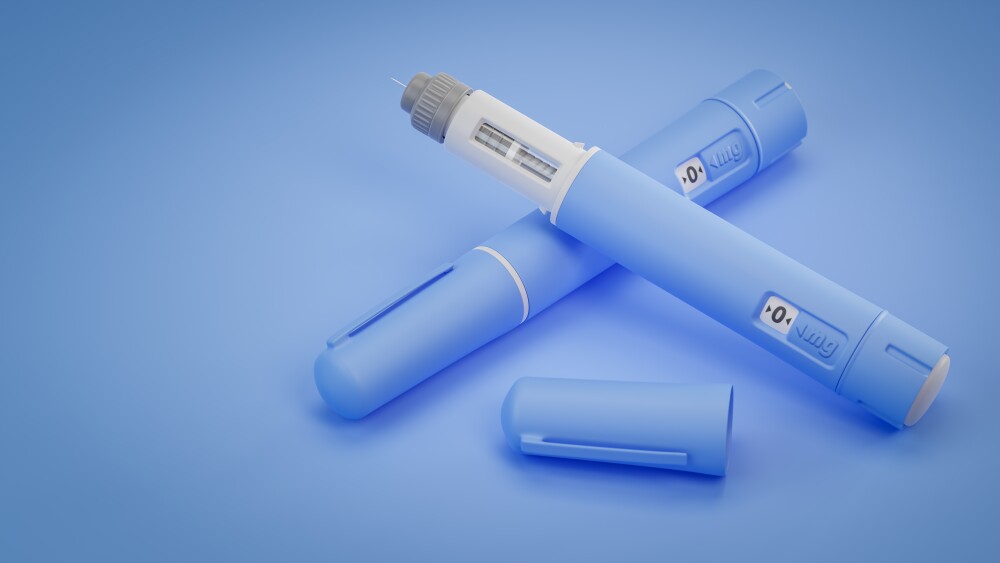Soon after the onset of the COVID-19 pandemic, it became increasingly evident that necessary infection control measures also had unintended consequences for Canadians living with diabetes.
Monitoring Time in Range helps minimize fluctuating blood sugar levels, mitigates complications of diabetes
LAVAL, QC, Oct. 26, 2022 /CNW/ - Soon after the onset of the COVID-19 pandemic, it became increasingly evident that necessary infection control measures also had unintended consequences for Canadians living with diabetes.1 Despite the best efforts of healthcare providers, the resulting interruptions in access to comprehensive diabetes care – including regular appointments with their healthcare providers for education, medication review and renewals, prevention, and management of complications – are known to lead to morbidity and mortality.1 Over time, blood sugar levels which are even slightly higher than the target range can increase the risk of serious complications, including damage to the blood vessels, neuropathy, retinopathy, nephropathy, heart attack and stroke, and even cancer.2 Sanofi Canada is committed to partnering with healthcare providers and Canadians living with diabetes to help diminish potential complications by playing an active role in helping them manage their diabetes by controlling their blood sugar levels.
Since 1993, the A1C test has been the standard measure of average blood glucose levels used to screen for and diagnose diabetes, and to help those living with all types of diabetes manage the impacts of their disease.3,4 More recently, evidence supports that measuring Time in Range (TIR) helps to better identify patterns and fluctuations in blood sugar levels, which helps mitigate the short- and long-term complications of diabetes.5
Time in Range, an alternate way of measuring blood glucose levels, reflects the amount of time an individual’s blood glucose levels fall within a target range that is specific to their individual need.5 Unlike A1C, which measures the average amount of glucose in the blood for two-to-three-month periods, TIR captures the variation of blood glucose levels that occur within a 24-hour period and over time, offering a more timely and accurate summary of how levels may fluctuate.5
Dr. Bruce Perkins
Endocrinologist and Director, Diabetes Clinical Research Unit, Leadership Sinai Centre for Diabetes, Sinai Health System
“An A1C blood test gives a great estimation of the average blood sugar levels over the past two or three months. Wearing a continuous glucose sensor can give the exact same estimate of average blood sugar levels, but it also gives so much more. The sensor can give a measure of the ‘Time in Range,’ which is a measure of the proportion of the day that is spent in the target blood sugar range. Unlike the A1C blood test, it also shows how much time is below range (in hypoglycaemia) and above range (in hyperglycaemia). For a person living with diabetes, this adds such useful information to act on in order to manage day-by-day with blood sugar control, but also for reviewing patterns over the past weeks in order to plan better for the future, achieve blood sugar goals, prevent unpleasant hypoglycaemia, and prevent the long-term complications of diabetes.”
More than four million Canadians have been diagnosed with type 1 and type 2 diabetes and this number is only expected to rise over the next decade.6,7 If left untreated or improperly managed, diabetes can lead to a variety of complications, including heart disease, kidney disease, eye disease, impotence and nerve damage.6 In fact, diabetes complications are linked to premature death and can reduce lifespan by five to 15 years.7 Management of blood glucose is central in delaying or preventing diabetes-related complications.8
Ahmed Moussa
General Manager, General Medicines, Sanofi Canada
“At Sanofi Canada, we are proud of our longstanding legacy in diabetes, which began with the discovery of insulin over 100 years ago at Connaught Laboratories, the predecessor of Sanofi. As we look to the future, we remain committed to disrupting the status quo by harnessing the power of medicines, technology and education to support a holistic and personalized approach to diabetes management. Evidence has shown that people living with diabetes have challenges meeting guidelines-based targets for glycemic control. Time in Range is an innovation that provides valuable insights into the blood glucose levels of an individual living with diabetes, empowering them to have more informed discussions with physicians about how they can best manage their condition in order to live life to the fullest. We are committed to continuing to work with Canadians living with diabetes, their healthcare providers and the diabetes community to raise awareness of how innovative approaches – like Time in Range – can help those living with diabetes take control and prevent short- and long-term complications.”
Dr. Sarah Linklater
Chief Scientific Officer, JDRF Canada
“Living with type 1 diabetes is a 24-hour a day job. It requires vigilant self-management and countless daily decisions to reduce the risk of complications. Time in Range is crucial because it captures highs and lows in a way that A1C cannot. Another advantage is that Time in Range can be measured at home, arming a person with diabetes with real-time information about how their behaviours and choices affect blood sugar levels, empowering them to make changes, and enabling a more holistic and personalized approach to care.”
Sanofi Canada’s Commitment to Diabetes
A diagnosis of chronic illness, such as diabetes, often comes with high levels of uncertainty, lifestyle changes and new treatments. Sanofi Canada is committed to partnering with healthcare providers and people living with diabetes to provide optimal care and support. Building on our strong legacy and history in diabetes, with an agile approach to our work, Sanofi Canada’s commitment to helping Canadians with diabetes goes beyond medicine. We are working hard to fill the gaps and ensure that the needs of people living with diabetes are put first, enabling them to live well and manage their condition, simply and conveniently.
We are an innovative global healthcare company, driven by one purpose: we chase the miracles of science to improve people’s lives. Our team, across some 100 countries, is dedicated to transforming the practice of medicine by working to turn the impossible into the possible. We provide potentially life-changing treatment options and life-saving vaccine protection to millions of people globally, while putting sustainability and social responsibility at the center of our ambitions. In Canada, Sanofi employs approximately 2,000 people and in 2020, we invested more than $145 million in R&D in Canada, creating jobs, business and opportunity throughout the country.
_________________________
1 Diabetes Canada. “The Impact of COVID-19 on Access to Diabetes Care,
Management, and Related Complications”. https://www.diabetes.ca/DiabetesCanadaWebsite/media/Campaigns/COVID-19%20and%20Diabetes/impactcovid.pdf. Accessed on May 18, 2022.
2 Diabetes UK. “Complications of Diabetes”. https://www.diabetes.org.uk/guide-to-diabetes/complications. Accessed May 18, 2022.
3 Cleveland Clinic Journal of Medicine. “The role of hemoglobin A1c in the assessment of diabetes and cardiovascular risk”. https://www.ccjm.org/content/83/5_suppl_1/S4. Accessed May 18, 2022.
4 Diabetes Care Community. “A1C…what should it mean to me!”. https://www.diabetescarecommunity.ca/living-well-with-diabetes-articles/monitoring/monitoring-blood-glucose/a1c-what-it-should-mean-to-me/. Accessed May 18, 2022.
5 JDRF Canada. “What is Time in Range”. https://www.jdrf.ca/resources/time-in-range/. Accessed May 18, 2022.
6 Diabetes Canada. “Diabetes Fact Sheet.” https://www.diabetes.ca/diabetescanadawebsite/media/managing-my-diabetes/tools%20and%20resources/diabetes-fact-sheet.pdf?ext=.pdf. Accessed May 18, 2022.
7 Diabetes Canada. “Diabetes in Canada Backgrounder”. https://www.diabetes.ca/DiabetesCanadaWebsite/media/Advocacy-and-Policy/Backgrounder/2022_Backgrounder_Canada_English_1.pdf. Accessed May 18, 2022.
8 Diabetes Canada. “Managing your blood sugar”. https://www.diabetes.ca/resources/tools---resources/managing-your-blood-sugar#:~:text=Blood%20sugar%20is%20the%20amount,affect%20your%20blood%20sugar%20levels. Accessed May 18, 2022.
SOURCE Sanofi-Aventis Canada Inc.




